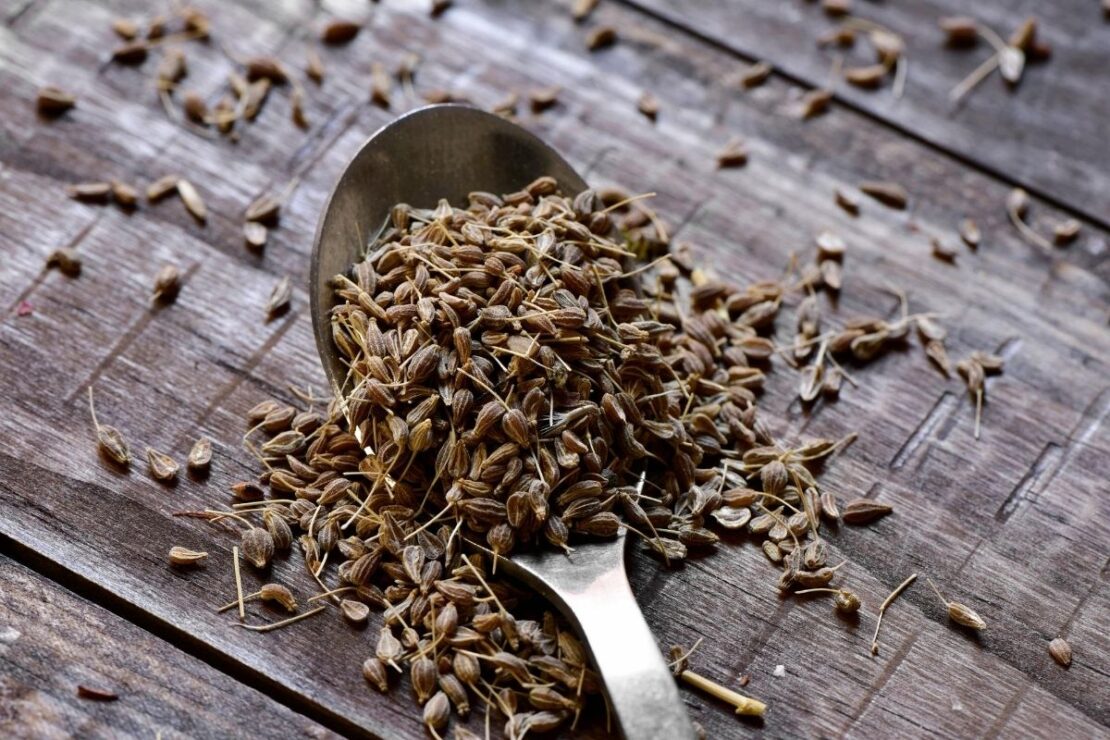
Anise Monograph: Pimpinella Anisum
The following anise monograph is an example of the type of thorough, well-researched monographs available on our membership site, The Herbarium. This beautiful anise monograph is written by The Herbarium contributor, Michayla Conrad.
Common Name: Anise burnet saxifrage, aniseed, anise, anise seed, sweet cumin
Botanical Name: Pimpinella anisum L.
Family Name: Apiaceae
TCM Name: Hui Xiang or Da Hui Xiang
Ayurvedic Name: Saunf
Native to: P. anisum is most likely native to the Eastern Mediterranean region (Global Information Hub on Integrated Medicine [Globinmed], 2016), most notably the Anatolian peninsula, Greece, and Egypt (Bauman & Semrau, 2016).
Geographic Distribution: P. anisum was well known in the spice trade due to its seeds, which led to its distribution in China. Since then, its cultivation has broadened, and it can now be found growing in various different countries, including northern Africa, Iran, Eastern Europe, Bulgaria, Romania, Japan, Argentina, Chile, and Mexico (Globinmed, 2016).
Parts Used: Dried seed (Hoffmann, 2003).
Herbal Actions: Analgesic, anticonvulsant, antifungal, antimicrobial, antioxidant, antispasmodic, antiviral, aromatic, carminative, disinfectant, diuretic, emollient, expectorant, galactagogue.
Energy: Warming, drying, and moistening.
Taste: Sweet, pungent, fragrant, and mildly spicy.
Preparation Methods: Essential oil, infusion, tincture, powder
Key Constituents: Volatile oil (1% to 4%) (mainly trans-anethole (70% to 90%), and also dianethole and photoanethole), coumarins (such as bergapten, umbelliferone, scopoletin), flavonoids (including rutin, isovitexin, quercetin, luteolin, apigenin glycosides), phenylpropanoids, lipids, fatty acids, sterols, proteins, carbohydrates (Hoffmann, 2003), sugars, malic acid, iron, sodium (Wood, 2008).
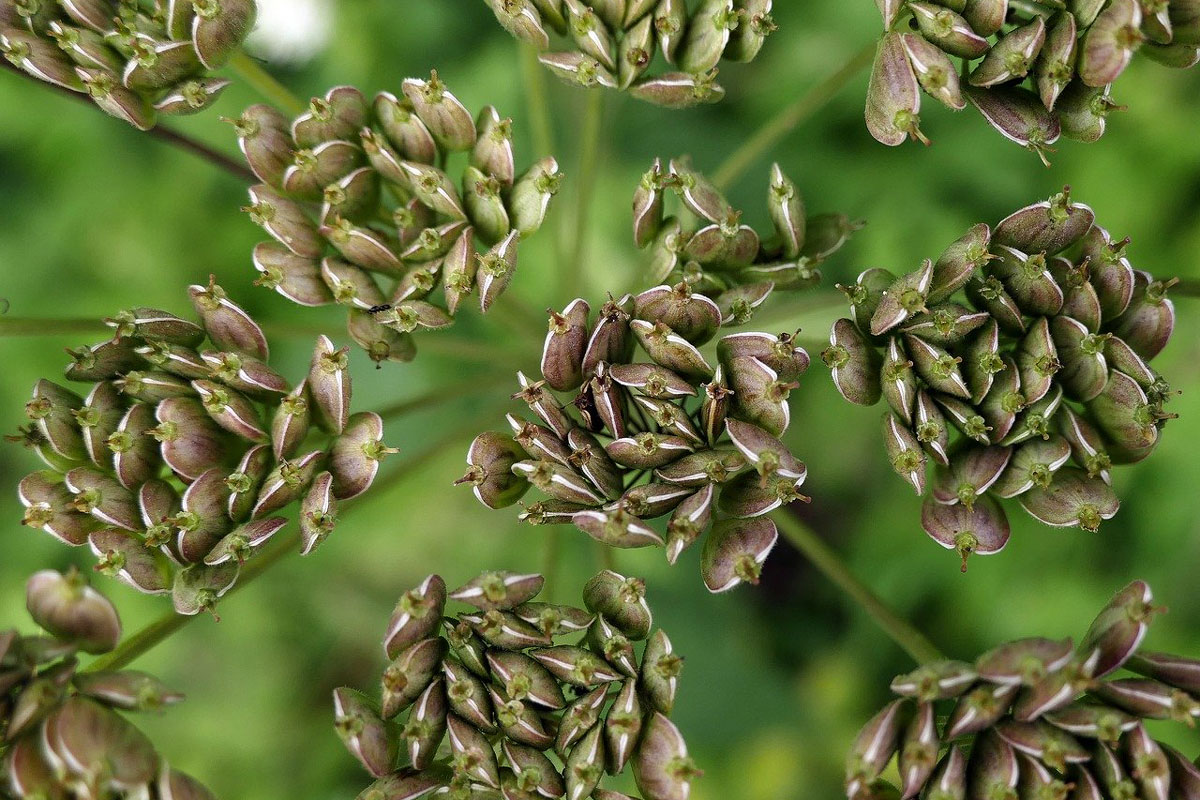
Sustainability Issues: Pimpinella anisum can be a rather picky plant when it comes to its preferred growing conditions. This species is sensitive to colder temperatures and requires 120 (Globinmed, 2016) to 130 frost-free days for its growing season (Dewey, 1999). It thrives best in average temperatures ranging from 54-64 degrees Fahrenheit and with a median rainfall of 100-200 cm annually. Sudden changes in both temperature and rainfall can cause a severe disturbance to the vitality of this plant, so it highly favors subtropical and temperate climate zones. However, P. anisum is a hermaphrodite, containing both male and female organs, making it self-fertile (Globinmed, 2016). As a result, this species has no known sustainability issues regardless of its persnickety nature.
Harvesting Guidelines: The fruits of P. anisum ripen about a month after flowering, around August or September, and the seeds are harvested when they are hard and change from green to gray-brown in color. If harvested too early, the seeds may not reach their peak aromatic capacity. For drying, cut the stalks a few inches from the base of the plant and hang upside down inside of a paper bag to catch falling seeds. Any remaining seeds on the seed head can be hand-picked once thoroughly dried (Dewey, 1999). Store in an airtight and sealed container.
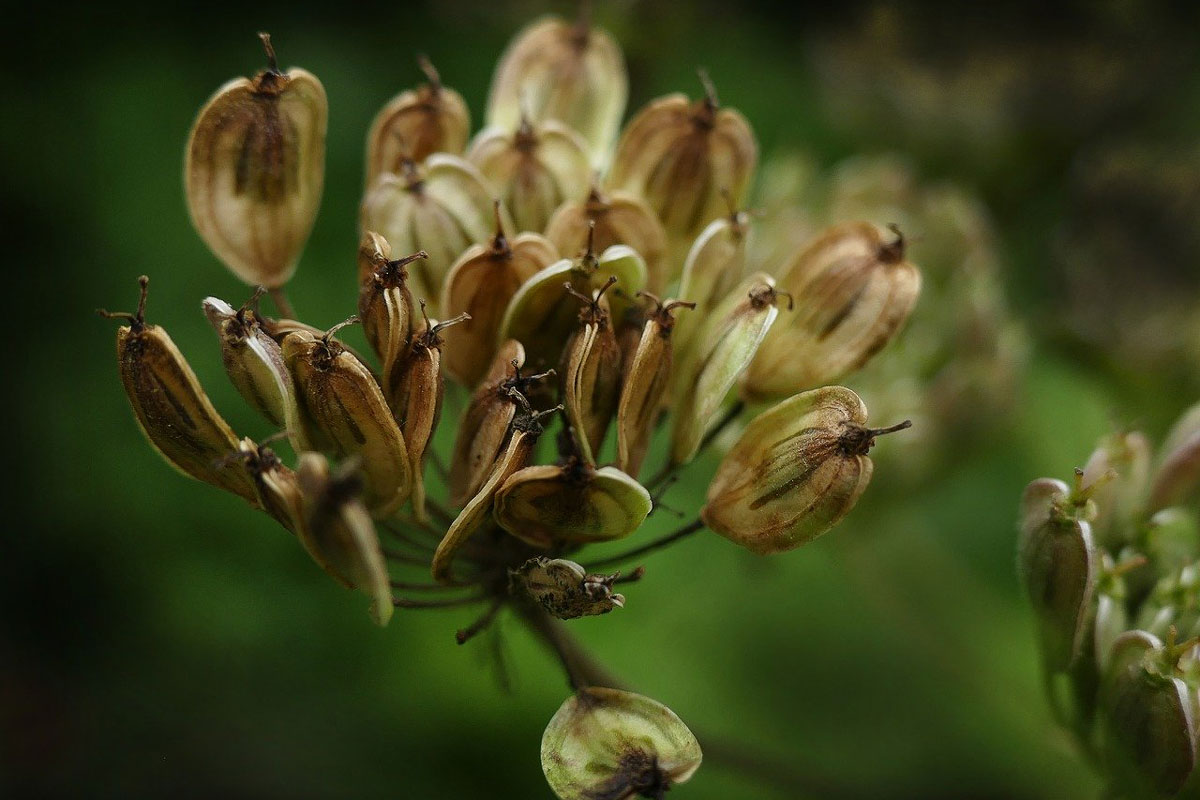
Safety: P. anisum is not recommended for use during pregnancy unless under the guidance of a qualified professional; alcohol-based extracts and the essential oil in particular should be avoided (Gardner & McGuffin, 2013). This plant may be photosensitizing and allergenic (Hoffmann, 2003), causing reactions in the respiratory tract, gastrointestinal tract, and skin. It should not be used with individuals who have allergies to anise and/or anethole (American Botanical Council [ABC], 1988). The essential oil may cause some burning. When using the essential oil, use caution by diluting properly and testing a small amount on the skin to ensure that it’s not too strong (Dewey, 1999). P. anisum seeds may interfere with anticoagulant therapy (Hoffmann, 2003) and the essential oil is contraindicated with seizures and epilepsy (Globinmed, 2016). Although anise has antispasmodic actions in moderate doses, the essential oil can produce tremors and seizures (Wood, 2008). It should not be confused with star anise (Illicium verum), which has an almost identical taste but comes from a different botanical family and is considered to be stronger in action (Wood, 2008).
Adult Dose:
Tincture: 1-4 mL (1:5 in 40%) 3x/day (Hoffmann, 2003).
Infusion: Gently crush 1-2 teaspoons of the seeds just before infusing to release the volatile and active oils. Pour 1 cup of boiling water over the seeds and infuse for 5-10 minutes in a covered canister. Slowly sip 1 cup 3x/day, preferably before meals (Hoffmann, 2003).
Dried Seed: Take up to 3 g daily (ABC, 1988).
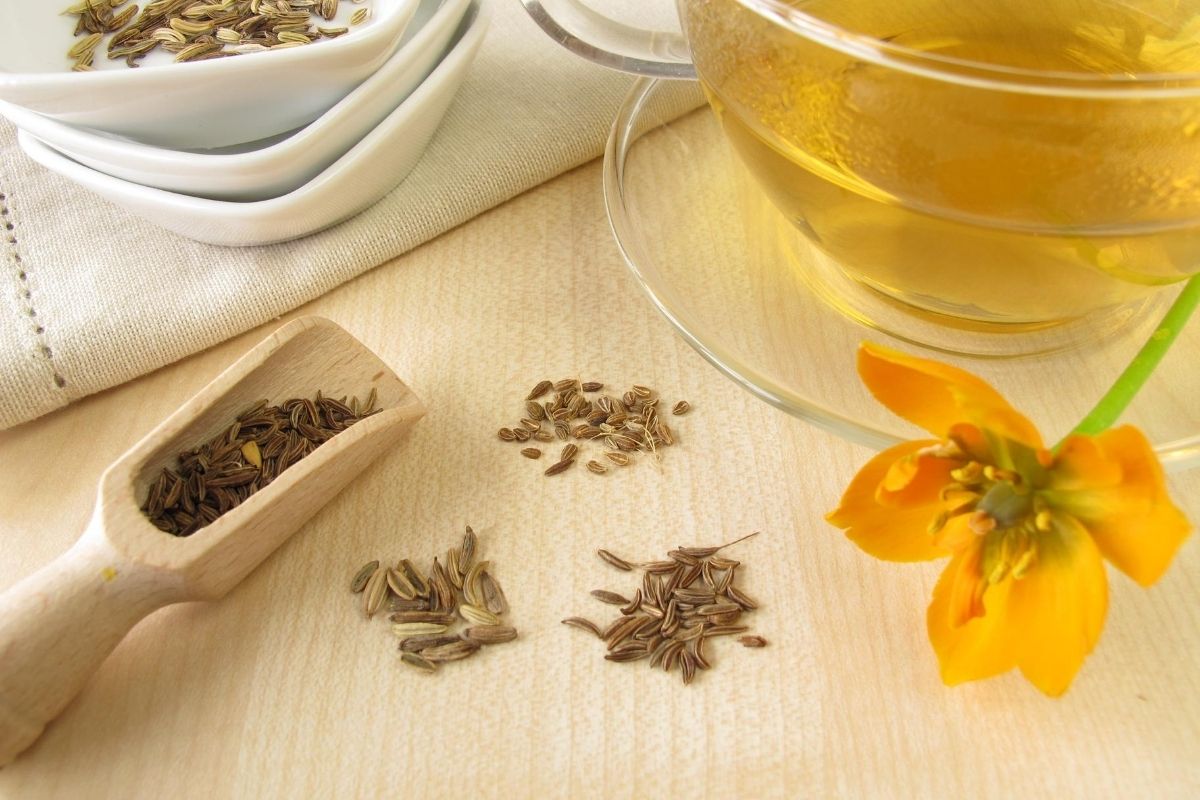
Botanical Description: Pimpinella anisum is a delicate herbaceous plant with a soft, branching, green stem (American Herbal Products Association [AHPA], 2015) that grows up to 1 meter (3.3 feet) in height (Bauman & Semrau, 2016). The lower leaves are dark green with a cordate, slightly lobed shape and serrated edges. The middle leaves are pinnate with lanceolate or cuneate lobes that embrace the upper linear leaves, which can have trifid or undivided margins. In the summer (Plants For A Future [PFAF], n.d.), it produces compound umbels of tiny, white delicate flowers that develop fruit in the fall (AHPA, 2015). The fruit, or seeds as they are more commonly called, ripen from August to September (PFAF, n.d.). P. anisum is an annual that will self-seed if the seeds are not harvested (Dewey, 1999).
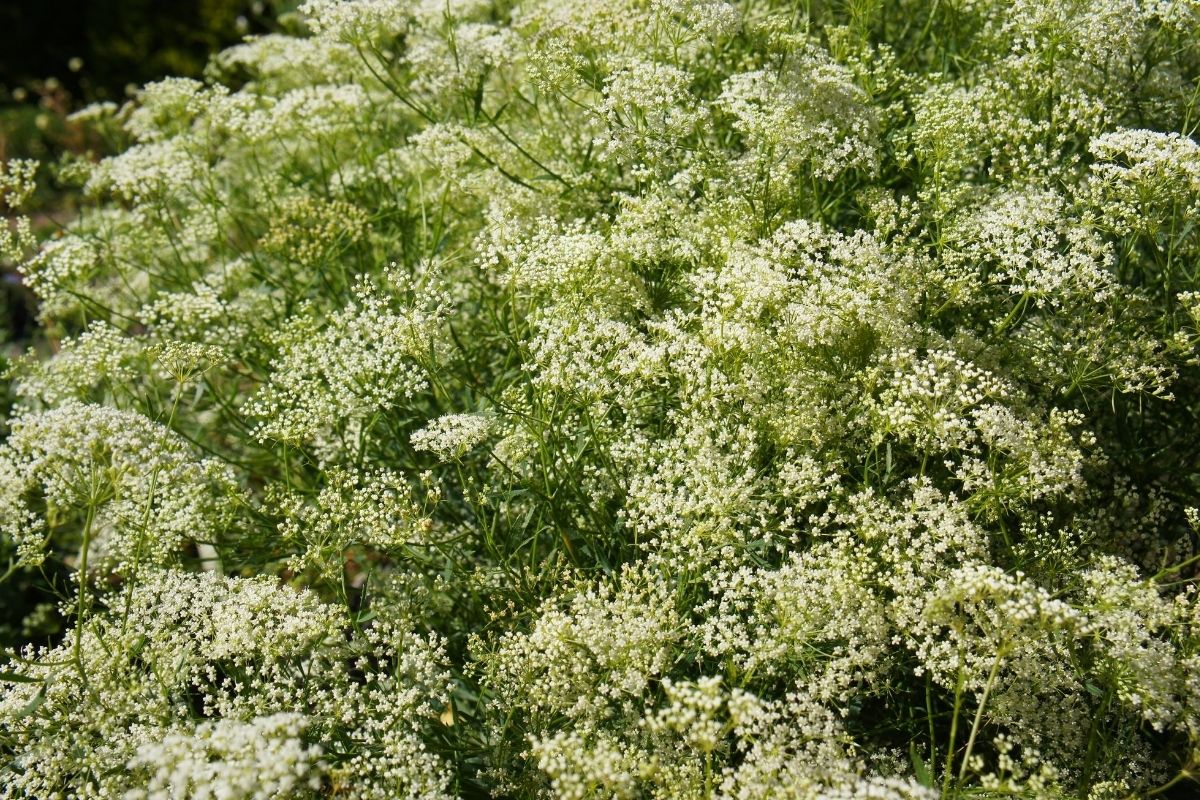
The aromatic fruits, commonly referred to as anise seeds, are used for the herbal actions and culinary properties of this plant. The fruit/seed is a cremocarp, a dry fruit characteristic of the Apiaceae family, and can be egg shaped (ovoid) or pear shaped (pyriform) with compressed sides that range from 3-6 mm long and 2-3 mm wide. The two separate mericarps that develop upon maturity (Globinmed, 2016) are attached to a pedicel 2-12 mm in length, and gray, green-grey, or grey-brown in color with hardly noticeable short, stiff hairs and have five filiform ridges that are lighter in color, narrow and entire (AHPA, 2015).
Getting to Know Anise
Herbalist Laurel Dewey sees the personality of anise as a perfectionist who hates being hurried and prefers to take their sweet time, making sure that no mistakes are made. Unwavering and hardy in its decisions, the plant matures after a long growth period to produce a dazzling seed head; this can be seen as a statement to the world that slow and steady does, in fact, win the race. However, this idealist tendency does come with tension and pressure. The constant need for excellence and accomplishment can sometimes cause this plant to snap, resulting in the stalk “bending over backwards” or “breaking its back” under the weight of its seed head (Dewey, 1999).
According to the Doctrine of Signatures, the observable qualities of a plant can often match the character of a person in need of its properties. In the case of anise, the personality profile can be seen as solid, reluctant, and strong-willed (Dewey, 1999). While these can be good traits to have to some degree, they can also form habits that result in exhaustion, stress, lethargy, and nervousness (Wood, 2008).
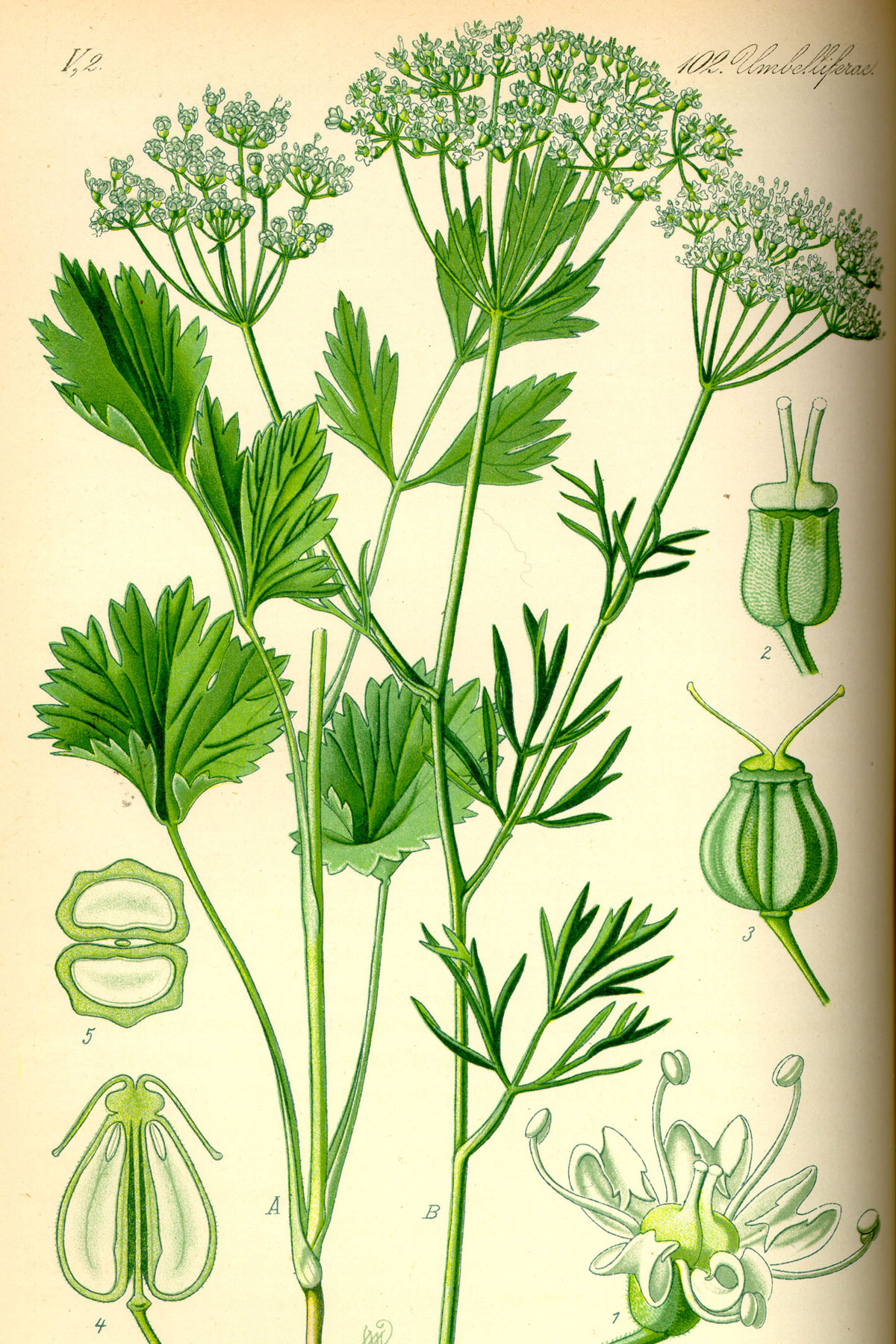
As a nervine and parasympathetic relaxant, P. anisum works well with those of a kapha constitution (Wood, 2008), which matches the traits mentioned above: endurance, strength, and stamina. Kapha is the energy of structure and smooth movement, ultimately establishing and organizing the systems in the body. Kapha energy can be described as the glue that holds the basic building blocks of all living things together, and is associated with the tendons, muscles, and bones. It helps to maintain the immune system and provides lubrication to the joints and moisture to the skin (Lad, 1996).
If kapha becomes out of balance, selfishness, rivalry, and attachment can begin to show patterns in one’s actions. However, when in balance, the kapha energy can encourage compassion, tranquility, and respect, creating a sweet and loving frame of mind (Lad, 1996). Revered for its fragrant, delicately spicy, and sweet flavor, P. anisum’s calming and restoring actions on the nervous system are used for those with a predominately kapha constitution who are experiencing stress and exhaustion (Wood, 2008). It is particularly indicated for respiratory and digestive issues (Wood, 2008).
Pimpinella anisum is a true delicacy from its dainty appearance to its sensitive growth conditions to its distinctive aroma. This plant has gracefully made its mark in both the culinary and herbalism worlds as a sophisticated carminative and nervine over the course of history (Wood, 2008).
The earliest known use of P. anisum is documented in Egypt through the Ebers Papyrus dated 1500 BCE, which states that the seeds of the plant were used for flatulence (Hemphill, 2002). During the 1st century BCE, the Roman Empire constructed a trading center in Alexandria, Egypt that regulated all of the spices arriving into the Greco-Roman region (Sharangi, 2018) and linked with the network of sea routes that spread to include Persia, Arabia, China, India, and Rome through a route known as the Silk Road (United Nations Educational, Scientific, and Cultural Organization, n.d.). Through this trade, anise seed was able to become a staple throughout Europe, East Asia, and the Mediterranean (Bauman & Semrau, 2016).
Anise Seed for Digestion
Its ancient name was solamen intestinorum, which translates as “comforter of the bowels” and implicates its common use for conditions in the digestive tract (Wood, 2008). Dioscorides, a Greek physician who lived in the 1st century CE, described anise as drying and warming, and suggested its use for not only aiding digestion, but also for colds, headaches, insufficient breast milk supply in nursing mothers, expelling parasitic worms, and aiding bad breath in his pharmacopoeia, De Materia Medica written in 70 CE (Bauman & Semrau, 2016). Around the same time, Pliny the Elder, a Roman statesman and naturalist, recorded that “it is generally thought that there is nothing in existence more beneficial to the abdomen and intestines than anise” (Secundus, 1855, p. 273), and also indicated its beneficial actions towards seizures and convulsions (Bauman & Semrau, 2016). Furthermore, herbalist Matthew Wood states that this is a time-honored plant for digestive issues such as lack of appetite, sluggish digestion, bloating, and spasm (Wood, 2008).

Anise works as a digestive and carminative by stopping food from fermenting in the stomach and stimulating heat in the digestive tract due to its warming properties. Anethole, the main volatile oil in the plant, aids in soothing the lining of the stomach. Herbalist Laurel Dewey states that many people have found anise to be gentler on the system and more effective than conventional over-the-counter products for indigestion and gas (Dewey, 1999).
Herbalist Laurel Dewey suggests making a tea of anise seeds, caraway seeds, and fennel seeds for bloating or flatulence. She also states that you can use the essential oil of P. anisum by diluting 5 drops in 1 tablespoon of a base oil such as apricot, grape seed, or safflower oil, and rubbing the preparation on the stomach in a clockwise direction (Dewey, 1999).
Anise for the Respiratory Tract

While some prefer anise seed as a carminative and parasympathetic relaxant for soothing spasm and bloating in the stomach and intestines, others use P. anisum for breaking up excess mucus in the respiratory tract. 19th-century physician and author, William Thomas Fernie, notes that P. anisum tea has a considerable effect on clearing out the bronchial tubes, especially in children. He also used anise tea to help adults with asthma (Wood, 2008). The tea of anise seeds also helps with breaking up any mucus in the lungs that presents as a dry, hard cough. You can also add honey to help soothe and calm the throat (Dewey, 1999).
Herbalist David Hoffmann (2003) describes this plant as an antimicrobial for the respiratory tract as well as an antispasmodic, claiming that “antispasmodics relax the autonomic nervous system, but not necessarily the central nervous system” (p. 494). As a result, anise seed is able to promote muscle relaxation without having a sedative effect.
Anise for Stress and Anxiety
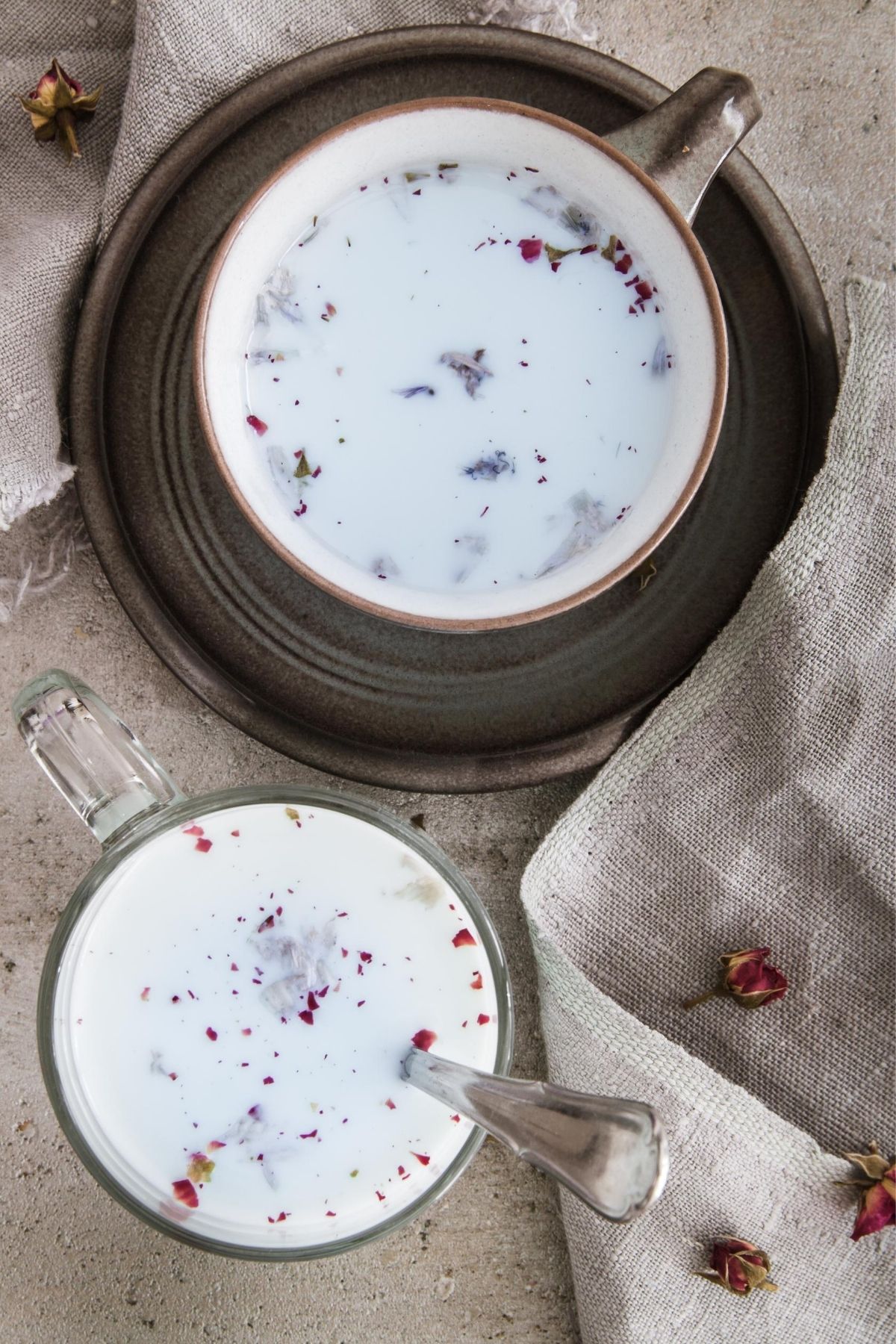
Anise also acts as a nervine, calming psychological stress and anxiety (Hoffmann, 2003). Combine ground anise seeds with hot milk (a natural source of tryptophan) and you have a tasteful and relaxing drink to ease insomnia (Dewey, 1999). However, it’s important to note that the active oils released from the crushed seeds are at their most active only for a short time after being initially crushed. Therefore, pre-ground seeds do not contain the same health benefits explained in this monograph (Dewey, 1999).
This relaxant effect is thought to be due to inhibitory effects on muscarinic receptors, which recognize acetylcholine and produce a signal transduction in the smooth muscles, autonomic ganglia, central nervous system, and other parasympathetic organs (Aronstam & Patil, 2009). Acetylcholine also activates glandular functions in the endocrine system (Lieberman, 2016), which could help to explain its influence on the hormones, promoting prolactin and reducing estrogen (Wood, 2008).
Anise for the Liver and Gallbladder
P. anisum is also thought to have actions on the liver and gallbladder due to its high volatile oil content. In the 16th century, it was most widely used to loosen any blockage in the liver and the four humors—yellow bile, black bile, phlegm, and blood. Modern herbalist Phyllis Light uses anise to relieve congestion in the gallbladder “when there is phlegm occluding the bile passages and gallstones are released mixed with a lot of phlegm” (Wood, 2008, p. 382).
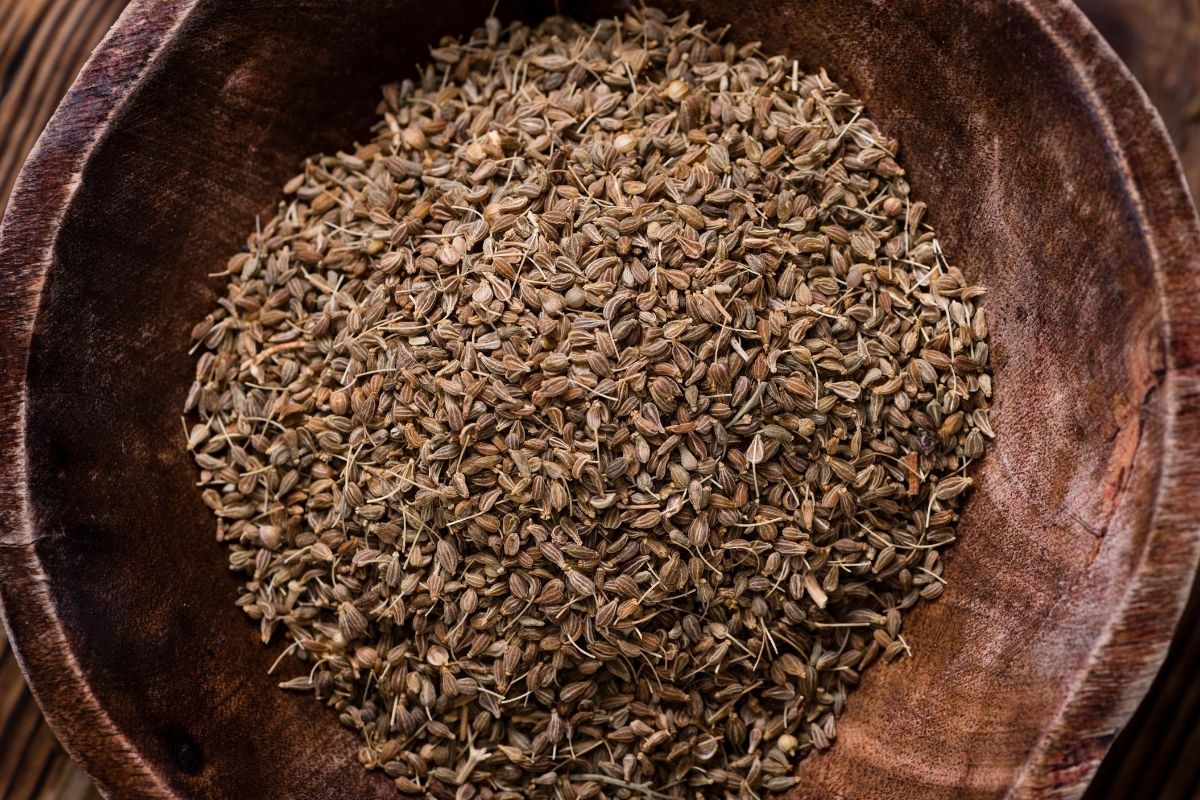
A research study was conducted on both the essential oil and fruit extract of P. anisum for its effects against nonalcoholic fatty liver disease (NAFLD) in rats. The results showed a reduction of weight gain and positive effects of protection against fat accumulation in liver tissue. These effects were dose dependent, with the most effective doses being 200 mg/kg/day of the fruit extract and 0.5 mg/kg/day of the essential oil. Anise seed has also shown in vivo antioxidant activity and it is theorized that free radicals are involved in the diagnosis of fatty liver disease. Thus, the extract and essential oil of P. anisum have a dual action against this disease progression as they not only modify lipid profile but also improve antioxidant defense mechanisms (Asadollahpoor et al., 2017).
These protective properties of P. anisum were reviewed in another study that analyzed the extract against carbon tetrachloride (CCl4) -induced liver hepatotoxicity in vivo and in vitro. It’s thought that CCl4 is metabolized into a reactive trichloromethyl (CCl3) free radical by cytochrome P450 in the liver and that this creates a reactive free radical formation cascade. This chain reaction produces lipid peroxidation and cell damage, ultimately resulting in cell lysis. Anise seed’s ability to reduce this oxidative stress along with its effects on cellular defense mechanisms helps to exhibit the plant’s hepatoprotective and cytoprotective actions (Jamshidzadeh et al., 2015).
The strong antioxidant effect that P. anisum presents is thought to be associated with its polyphenol compounds (i.e. coumarins), since these have been recognized in extracts of the seed. Polyphenols are known to inhibit oxidation and have protective properties throughout the body in a variety of mechanisms (Jamshidzadeh et al., 2015).
As this anise monograph shows, anise seed has proven its strength not only in herbal preparations, but also as a staple spice in the kitchen. Its sweet and strong licorice taste has been used in the food industry as a flavoring in gums, sweets, ice cream, and fish products (Shojaii & Abdollahi, 2012). Additionally, it can be used in baked goods, such as cookies or bread, and included in fruit salads (Dewey, 1999). It can also be found in your bathroom, as its essential oil has been used in perfumes and toothpastes (Plants For A Future, n.d.). No matter how it’s used, it’s a plant that’s been beloved in many homes throughout time and it’s easy to see why.
Scientific Research:
Antioxidant and antibacterial properties of anise (Pimpinella anisum L.)
Effect of Aqueous and Ethanolic Extracts of Pimpinella anisum L. Seeds on Milk Production in Rats
Efficacy of Iranian Traditional Medicine in the Treatment of Epilepsy
The efficacy of Iranian herbal medicines in alleviating hot flashes: A systematic review
The Study on the Effects of Pimpinella anisum on Relief and Recurrence of Menopausal Hot Flashes
Make sure to pin our Anise Monograph Pinterest graphic, below, for future reference!
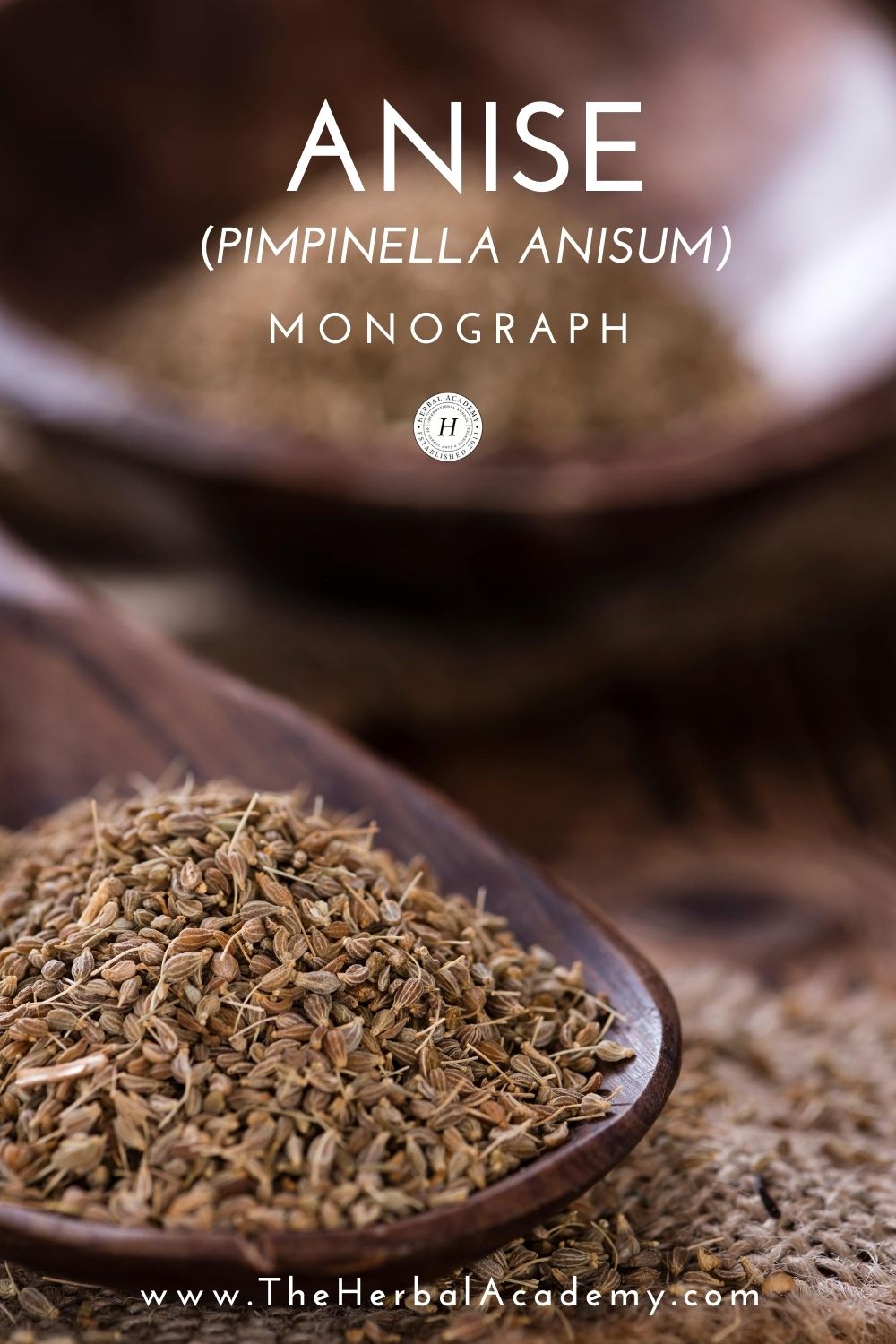
REFERENCES
American Botanical Council. (1988). The Commission E monographs: Anise seed. Retrieved from http://cms.herbalgram.org/herbstream/library/CommissionE/#param.wapp?sw_page=@@@@ceHome%3Fufgp%3DMonographs/Monograph0006.html
American Herbal Products Association. (2015). Pimpinella anisum (fruit). Retrieved from http://www.botanicalauthentication.org/index.php/Pimpinella_anisum_(fruit)#Macroscopic_Characteristics
Aronstam, R.S., & Patil, P. (2009). Muscarinic receptors: Autonomic neurons. In L.R. Squire (Ed.), Encyclopedia of neuroscience (pp. 1141-1149). Amsterdam, Netherlands: Elsevier Ltd.
Asadollahpoor, A., Abdollahi, M., & Rahimi, R. (2017). Pimpinella anisum L. fruit: Chemical composition and effect on rat model of nonalcoholic fatty liver disease. Journal of Research in Medical Sciences: The Official Journal of Isfahan University of Medical Sciences, 22(1), 37. https://doi.org/10.4103/1735-1995.202147
Bauman, H., & Semrau, A. (2016). Food as medicine: Anise (Pimpinella anisum, Apiaceae). Retrieved from http://cms.herbalgram.org/heg/volume13/12December/FAMAnise.html?ts=1581961746&signature=a7b5f13c556e9c6b9c1b1c93e3e7cae6&ts=1581970894&signature=325c6ac5b1aaabfe38be7d1b1ea4ec01
Dewey, L. (1999). Plant power: The Humorous Herbalist’s guide to finding, growing, gathering, & using 30 great medicinal herbs. East Canaan, CT: ATN/Safe Goods.
Gardner Z., & McGuffin, M. (2013). American Herbal Products Association’s botanical safety handbook (2nd ed.). Boca Raton, FL: CRC Press /Taylor & Francis.
Global Information Hub on Integrated Medicine. (2016). Pimpinella anisum L. Retrieved from http://www.globinmed.com/index.php?option=com_content&view=article&id=106186:pimpinella-anisum-l&catid=286&Itemid=357
Hemphill, I. (2002). The spice and herb bible: A cook’s guide. Toronto, Canada: Robert Ross.
Hoffmann, D. (2003). Medical herbalism: The science and practice of herbal medicine. Rochester, VT: Healing Arts Press.
Jamshidzadeh, A., Heidari, R., Razmjou, M., Karimi, F., Moein, M.R., Farshad, O.,…Shayesteh, M.R. (2015). An in vivo and in vitro investigation on hepatoprotective effects of Pimpinella anisum seed essential oil and extracts against carbon tetrachloride-induced toxicity. Iranian Journal of Basic Medical Sciences, 18(2), 205–211.
Lad, V. (1996). Ayurveda: A brief introduction and guide [PDF file]. Retrieved from https://www.ayurveda.com/pdf/intro_ayurveda.pdf
Lieberman, B. (2016). Acetylcholine: Definition, function & deficiency symptoms. Retrieved from https://study.com/academy/lesson/acetylcholine-definition-function-deficiency-symptoms.html
Plants For A Future. (n.d.). Pimpinella anisum – L. Retrieved from https://pfaf.org/user/Plant.aspx?LatinName=Pimpinella+anisum
Secundus, G.P. (1855). Natural history of Pliny (Vol. 4; J. Bostock & H.T Riley, Trans.). London, United Kingdom: Taylor & Francis. Retrieved from https://archive.org/details/naturalhistoryof04plinrich/page/n4/mode/2up
Sharangi, A.B. (2018). Indian spices: The legacy, production and processing of India’s treasured export. Cham, Switzerland: Springer International Publishing.
Shojaii, A., & Abdollahi Fard, M. (2012). Review of pharmacological properties and chemical constituents of Pimpinella anisum. ISRN Pharmaceutics, 2012, 510795. https://doi.org/10.5402/2012/510795
United Nations Educational, Scientific, and Cultural Organization. (n.d.). What are the Spice Routes? Retrieved from https://en.unesco.org/silkroad/content/what-are-spice-routes
Wood, M. (2008). The earthwise herbal: A complete guide to old world medicinal plants (Vol. 1). Berkeley, CA: North Atlantic Books.







